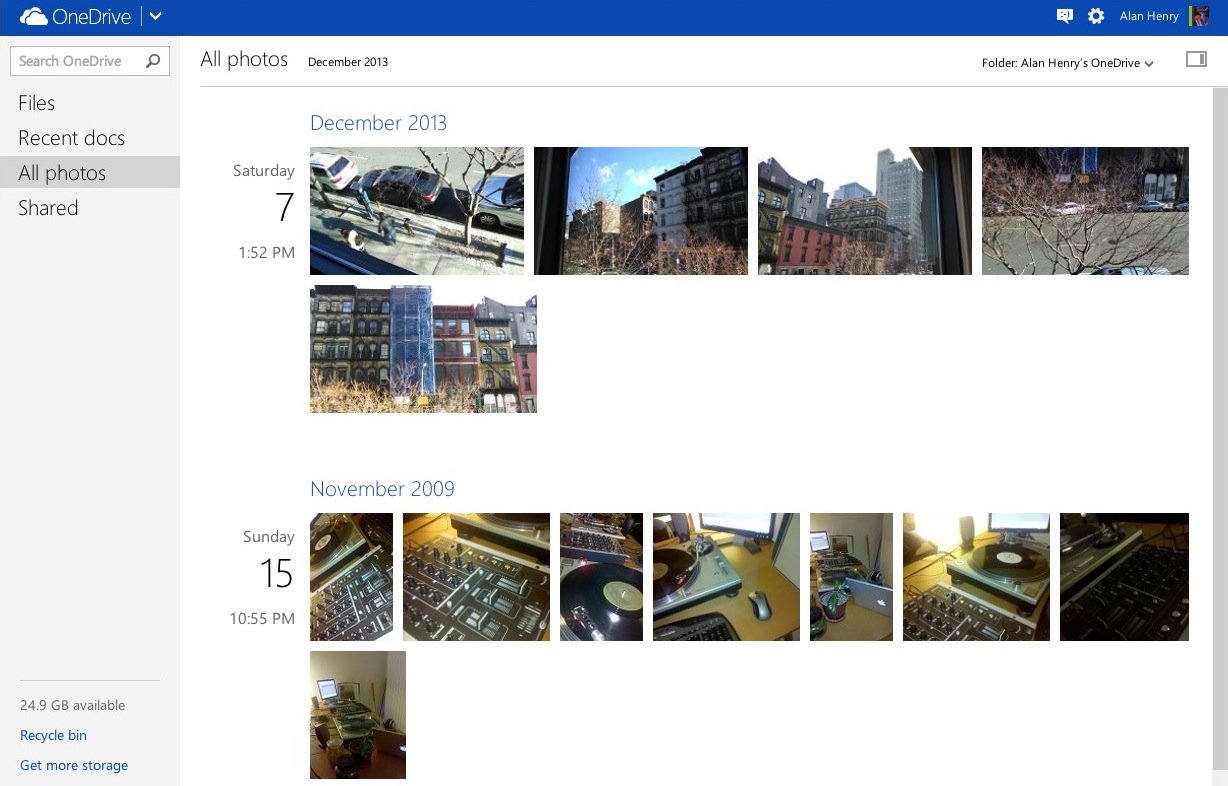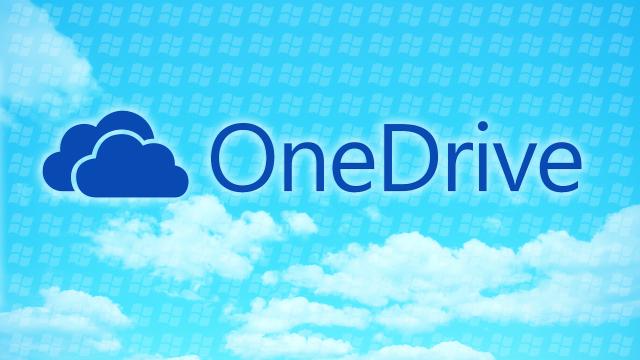Dear Lifehacker, I never really took a close look at SkyDrive, but people tell me it’s really good. Is the new OneDrive service worth looking at? Is it better than something like Dropbox or Box? Or is it just a name change? Sincerely, OneDriver
Photos by Severe (Shutterstock) and
Tischenko Irina (Shutterstock).
Dear OneDriver,
The answer is: a bit of both. The new name was brought on as a result of a long legal battle, but apart from that, it has come a long way in a really short period of time. If you’ve been a SkyDrive user, you’ve seen the updates roll in over the past several months. If you’re new, you have some catching up to do. Whether or not it’s worth ditching your current cloud storage company is another question entirely.
What OneDrive Does Well
Besides the new name, Microsoft OneDrive has picked up a few substantial updates. Here are a few you should be aware of:
- Syncing apps for all platforms, and all of them support auto-upload for photos: OneDrive has mobile apps for Windows Phone, Android, or iOS. Any photos you take are automatically backed up in your OneDrive account (but not automatically made public) and synced to your other devices.
- Integration with Xbox: There’s a OneDrive app specifically for Xbox, so if you have an Xbox 360 or Xbox One connected to your TV, media stored in your OneDrive account is available to you on the big screen. It will even do video transcoding on the fly for you, which is awesome.
- Automatically organised photo galleries: Not absolutely new, but OneDrive does a great job of organising your photos into galleries based on when the photos were taken. You can share them as galleries, slideshows, or individually. You can also add captions or location tags, or post your photo or gallery right to Facebook.
- Integration with Outlook: When composing a new message in Outlook, you have the option to attach files from OneDrive. Your recipient will receive a thumbnail preview, which is also a link to view it on OneDrive. That integration doesn’t work the other way — incoming attachments cannot be easily routed to OneDrive.
- Tight integration with Office Online: It’s not exactly new, but OneDrive integrates with Office Online the way Google Drive integrates with Google Docs. Office documents open in their Office Online counterparts. Share them out, and you can collaborate on them in real time with other Office Online users.
- Referrals for friends: Microsoft will add an additional 500MB of storage to your OneDrive account for every user you refer to them. You can earn up to 5GB from referrals on top of whatever you already have.
- Start (by default) with 7GB for free, get 8GB more if you jump through a few hoops: Putting aside previous giveaways, new users signing up today will start with 7GB. If you want another 8GB on top of that (or on top of whatever you already have), you can get 3GB for auto-uploading photos from your mobile devices and installing the desktop clients, and the rest in referrals.
People heavily vested in Microsoft’s tools and technologies are the people who should definitely use OneDrive. If your company revolves around Microsoft Office and Outlook, you’re a happy Windows Phone user, or everyone in your office is running Windows (better yet, Windows 8), then OneDrive’s integration with all of that makes it pretty compelling. OneDrive is pretty firmly baked into Windows 8 (to the point where it’s tricky to remove if you don’t want it), so there’s special appeal for people who use Windows 8 and like it.
If you’re looking for more storage beyond what you can get for free, its pricing plans are competitive. However, feature parity isn’t really a reason to migrate, so if you don’t see anything here that really appeals to you, you may be better off with what you already have.
What OneDrive Doesn’t Do

Beyond that however, there isn’t too much to justify switching, although there’s plenty to justify adding. OneDrive is solid, feature-packed, and more storage is always a nice thing. If you like to use different cloud services for different things, it can be a great addition to the family.
It’s not perfect however. It’s missing the rich third-party development environment that Dropbox and other tools have thanks to their open APIs. You do get versioning and version history, but restoring deleted files isn’t as easy as it is in Dropbox, and there’s no built-in encryption beyond SSL in-transit (Dropbox encrypts in-transit and at-rest.) Referrals are capped at 5GB, and from what we can tell there’s no way to earn more space without paying for it.
If you’re a photographer and love sharing your photos, OneDrive sits somewhere between Google+ and Dropbox as a photo hosting option. Like Dropbox, as long as you’re syncing, you have direct access to your files on your computer. Like Google+, you have rich sharing tools on the web that are snappy, and give you privacy controls. However, OneDrive doesn’t have the editing tools that make Google+ useful for photographers. It doesn’t have any editing tools, aside from rotate, move, and copy. The galleries look great, but don’t expect to do much with your photos.
A Note About Privacy

We should note that OneDrive’s privacy policy didn’t change along with the name. We mentioned this when we talked about cloud storage services that protect your privacy, but Microsoft is well known for giving itself broad rights to peek into your account and rummage through your digital belongings. From that article:
On the other end of the spectrum, Microsoft’s SkyDrive has regularly come under scrutiny by privacy advocates. Microsoft is known to scan its users’ files, sometimes with disastrous results. In 2011, a German photographer had his Microsoft accounts restricted because Microsoft deemed some of his professional work “questionable”. Another user had his accounts closed even though the content he had stored was in a private folder, accessible only to him. SkyDrive isn’t alone here. Apple reserves the right to scan your files stored in iCloud for illegal or malicious content as well.
Of course, you give Microsoft that right when you sign up for a OneDrive account, but its approach goes much further than Dropbox, Box, or most other cloud storage companies (save Apple, which also asks for similar rights). We would suggest that if you do choose to use OneDrive, be careful what you store there, use a separate account from the same Microsoft account you use for mail or Xbox, or consider encrypting your data.
We hope that helps you with your decision, OneDriver! The new OneDrive is definitely useful, packed with features you would expect from any cloud storage service, and getting the leg up with a good bit of storage from the outset makes it even more worth using. If you’re already a heavy Dropbox, Box, or Google Drive user, we can’t see a reason to switch unless you’re taking the plunge into all things Microsoft, but there’s no harm in signing up — as long as you’re careful about what you put there. Good luck!
Cheers
Lifehacker
Got your own question you want to put to Lifehacker? Send it using our [contact text=”contact form”].

Comments
6 responses to “Ask LH: How Does The New OneDrive Compare To Other Cloud Services?”
Beware that OneDrive on Windows 8 is pretty buggy. It can regularly reset and delete all the synched files from your computer. You can download them again from the cloud, but that certainly puts a dent in your broadband allowance. But I have found that those files are then stored elsewhere in a folder called SkyDrive (2).old, so you can copy them back over. The killer is that there is no warning about this and no information online to assist you.
You say OneDrive is ‘It’s missing the rich third-party development environment that Dropbox and other tools have thanks to their open APIs’ but that’s not true, there’s a whole Live REST API & SDK that includes OneDrive and supports OAuth and it’s similarly featured to the Google or Dropbox APIs.
I think it is more so the lack of actual developers willing to waste their time on OneDrive.
One feature I really want them to add is shared skydrive/onedrive folders to be available on the desktop clients for people you’ve shared them with (same goes for the mobile app client). Dropbox does this but with Skydrive you have to log into the web browser to see any folders that have been shared with you. Really annoying.
i do not understand why every cloud service is so photo sync focused
its annoying as hell. and they do it without warning and its turned on by default
do they not realise i dont want my personal photos uploaded to the cloud, even if its a private cloud
I can use OneDrive at work, but Dropbox is blocked, although I can use the HTML version.
I dont care how secure a cloud provider say they are I keep my personal sensitive data offline always, when it comes to my pictures, videos and music I really dont care who is watching, it is all legit.